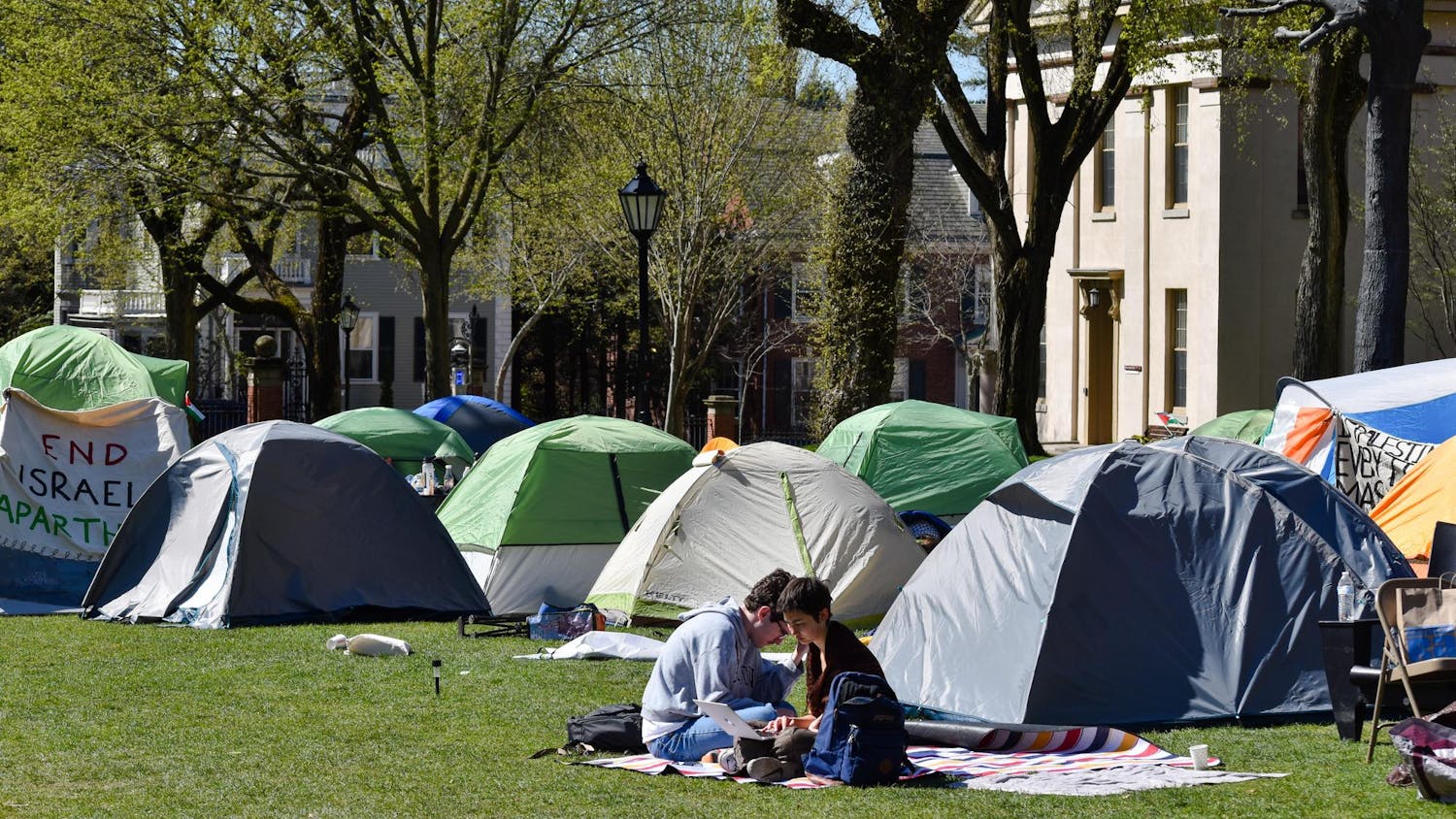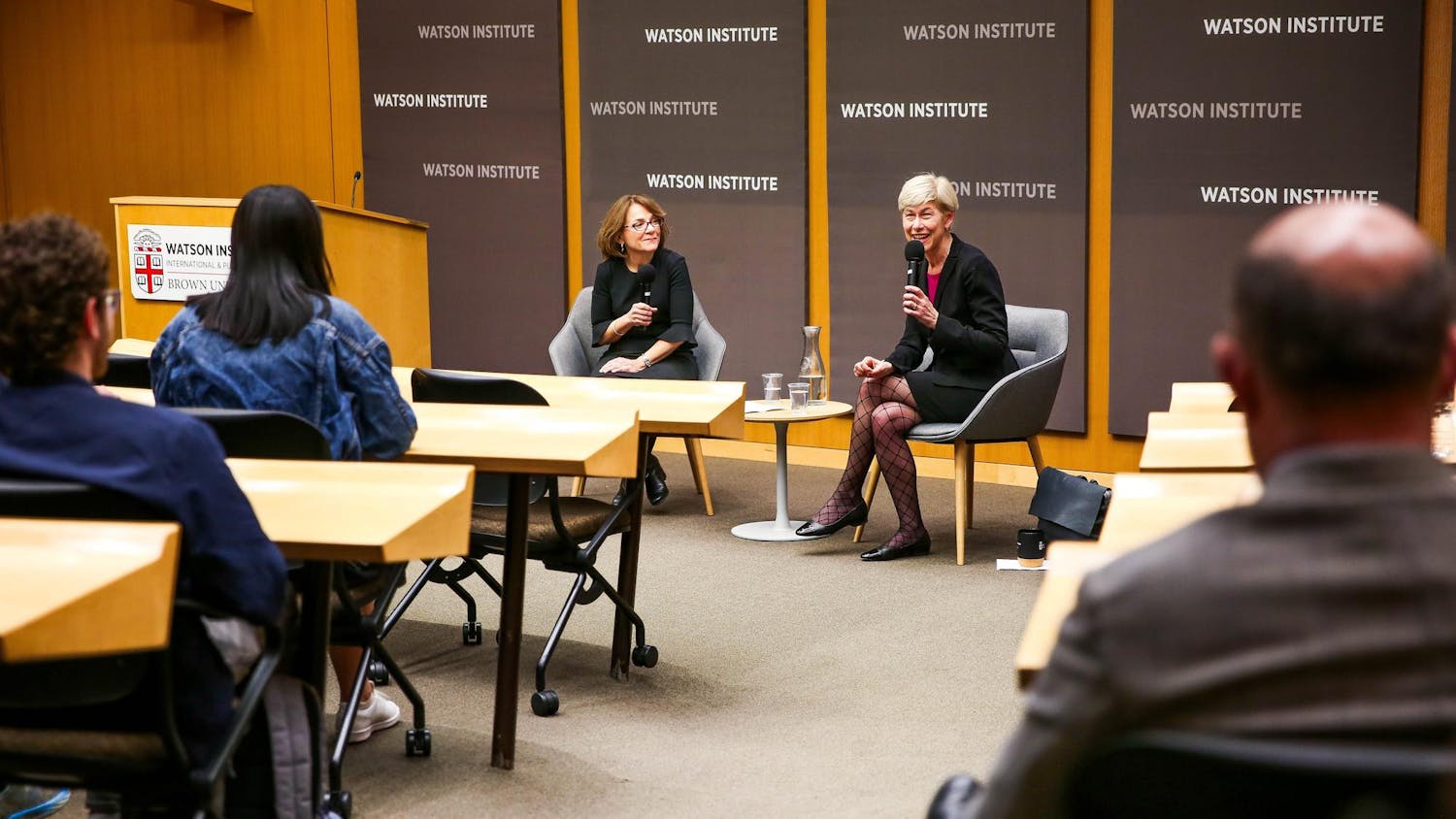The Corporation green-lighted construction of a new Division of Applied Mathematics building, received updates on the University’s efforts to combat sexual assault and considered the structural budget deficit at its meeting this weekend, President Christina Paxson announced Sunday in a community-wide email.
The University’s highest governing body also discussed the progress of several initiatives outlined in Paxson’s year-old strategic plan and accepted gifts totaling about $121 million, more than double the amount received at last year’s October meeting.
Renovations and expansions
The Committee on Budget and Finance’s decision to proceed with the applied math building means construction will likely commence next month and conclude in December 2015, Paxson wrote. Relocating the applied math division to the parking lot adjacent to Barus and Holley will open up space on Manning Walk for the School of Engineering’s new facility, on which construction is expected to begin in December.
In order to construct the two buildings, the University will raze four houses it owns that are included in Providence’s historic district — a move the Providence Preservation Society has opposed. The Corporation was informed of “ongoing engagement with neighbors … to ensure we are sensitive to the needs and interests of the surrounding community,” Paxson wrote.
Paxson told The Herald that neighbors are excited to see the applied math building replace the parking lot, but the University wants to ensure it is “preserving the character of Hope Street” and that neighbors are “comfortable with the style of the building.”
Stephen Maiorisi, vice president for facilities management, also updated the Corporation on the South Street Landing project — a joint effort by the University, Rhode Island College, the University of Rhode Island, developer Commonwealth Venture and the state government to repurpose the vacant South Street Power Station. As part of the University’s expansion into the Jewelry District, the project will create administrative offices for Brown and a nursing education space belonging to URI and RIC.
The University intends to sign a lease within the next few weeks, Paxson wrote.
Advancing academic pursuits
Discussion of advancing one of the strategic plan’s integrative themes — “Cultivating Creative Expression” — also elicited excitement, though Paxson said those plans are “evolving and still preliminary.”
Provost Vicki Colvin told The Herald that the conversation so far has highlighted the need for a new arts facility, likely a performance space for music and dance. Though a specific budget has not been determined, a new performance hall will likely cost between $50 million and $150 million, which would come from new fundraising, not existing revenue streams, she said.
Relocating administrative offices to the Jewelry District as part of the South Street Landing project might allow the Department of Music, currently at the periphery of campus, to move to a more central location, possibly in the Brown Office Building above the Brown Bookstore, Colvin said.
Dean of the College Maud Mandel delivered an update to Corporation members on the Engaged Scholars program.
Mandel told The Herald she talked about the incipient search for a new Swearer Center for Public Service director, who will also hold the title of associate dean for engaged scholarship “to signal the link” between the Swearer Center and the strategic plan’s focus on educational innovation.
As part of the Engaged Scholars program, the Office of the Dean of the College will roll out a new concentration track program to connect learning inside and outside the classroom through internships, volunteer work and entrepreneurial projects. The program will be piloted this year in four concentrations: anthropology, engineering, environmental studies and theater arts and performance studies.
Budgeting and the deficit
Colvin and Executive Vice President for Finance and Administration Beppie Huidekoper discussed the University’s operating deficit, which reached $8.8 million for fiscal year 2014 and is expected to be about $10 million this year. They cited greater-than-expected financial aid expenditures and declining federal research funding as causes of the shortfall, Paxson wrote.
But after a couple years of deep cuts, federal funding is slowly rising, Colvin told The Herald, adding that the University must encourage faculty members to be “even more aggressive” in writing grant proposals. In particular, faculty members in science, technology, engineering and mathematics fields — where 88 percent of the University’s federal research money goes — “need to kind of double down,” she said.
The administrators also briefed the Corporation on last week’s establishment of a Deficit Reduction Working Group.
The University must balance its budget over the next three years to be able to pursue new plans effectively, Paxson wrote.
This process will entail growing revenue, not just cutting expenses, Colvin said. She cited summer pre-college programs and blended master’s degrees — both of which contain online components — as potential sources of greater revenue.
Patricia Watson, senior vice president for advancement, updated the Corporation on the fundraising campaign it approved in February that will support strategic plan initiatives, Paxson wrote. Watson told members that the next year will focus on developing the campaign’s priorities, strategy and structure.
Director of Athletics Jack Hayes presented to the Corporation about the Athletics Department’s work over the last year to create its recently approved strategic plan.
Sexual assault policy
Frances Mantak ’88, director of health promotion, and Margaret Klawunn, vice president for campus life and student services, spoke about measures the University is taking to prevent sexual assault and establish “sensitive and fair procedures” for responding to allegations of sexual misconduct, Paxson wrote.
These measures include new programming during first-year orientation, hiring in Counseling and Psychological Services and Health Services and the search for a full-time Title IX coordinator, Paxson wrote. The University formed a Sexual Assault Task Force earlier this year and announced its membership in September. It will deliver its recommendations by Dec. 1.
The U.S. Department of Education is currently investigating the University’s handling of sexual assault allegations for possible Title IX violations.
Gifts and recognition
The Corporation also accepted gifts totaling more than $121 million, including almost $65 million in donations that directly support the strategic plan.
Another gift pledged about $20 million for the new engineering building and about $19 million for a purpose to be determined at a later time.
“The total for the gifts was just extraordinary and reflects a lot of excitement about the upcoming campaign,” Paxson said, adding that she is personally excited about a gift that includes approximately $1.9 million for undergraduate summer internships, $625,000 for Undergraduate Teaching and Research Awards and $500,000 in current-use funding to expand CAPS.
The University also established endowed professorships in brain science, China studies, international affairs and engineering, as well as the Head Coaching Chair for varsity women’s soccer.
The Corporation approved the naming of the Rockefeller Library’s Sidney E. Frank Digital Studio to recognize the Sidney E. Frank Foundation’s $2.5 million gift.
It also approved the naming of the library’s central reading room in honor of the donors who contributed $1 million for its renovation, which was completed earlier this month.
Four new Trustees joined the Corporation this weekend, beginning their six-year terms: George Barrett ’77 P’06 P’15, Genine Macks Fidler ’77 P’04 P’12, Alexandra Robert Gordon ’91 and Ralph Rosenberg ’86 P’17.
A photo caption previously accompanying this article incorrectly stated that the applied math building at 182 George St. is set to be taken down. In fact, the applied math buildings at 37 Manning St. and 333 Brook St. will be replaced. The Herald regrets the error.

ADVERTISEMENT




